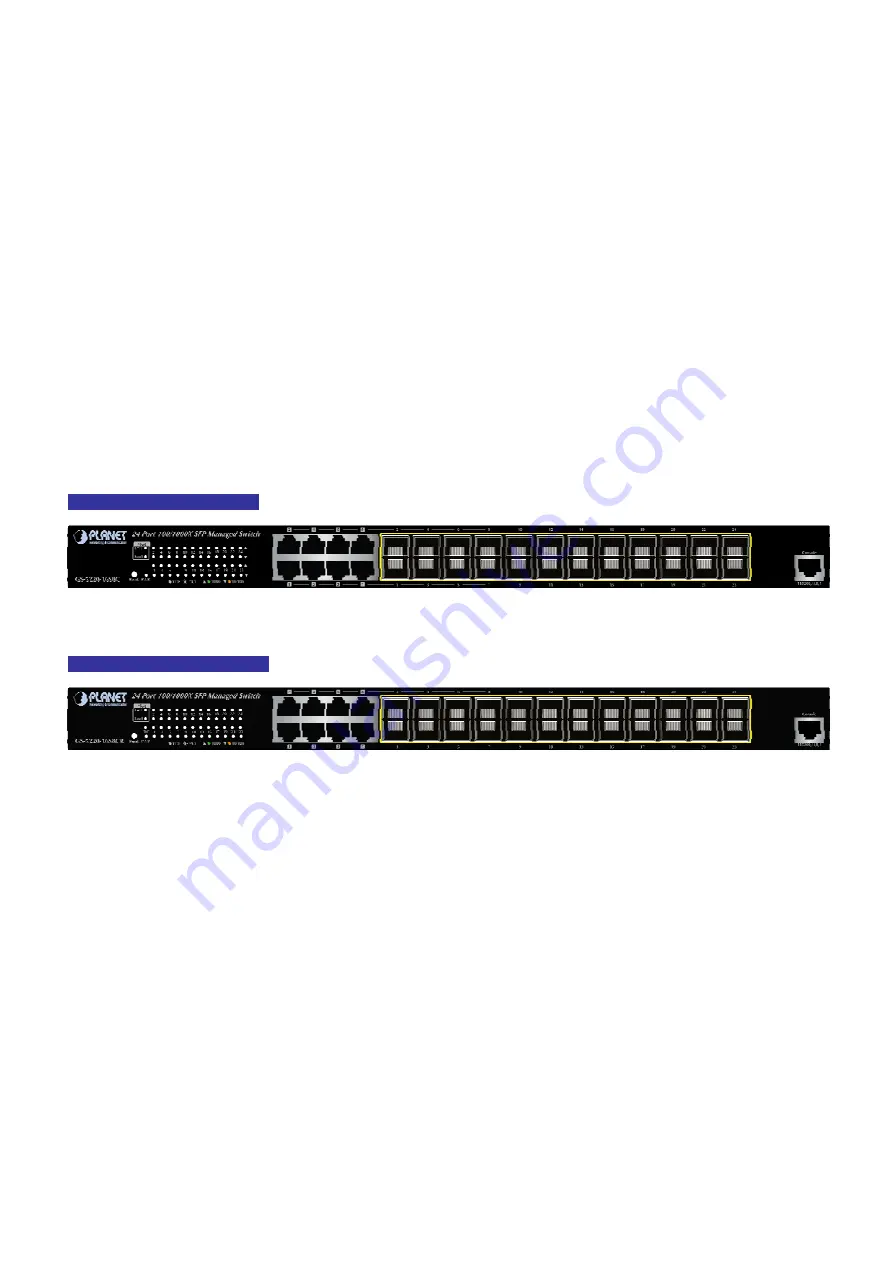
User’s Manual of GS-5220-16S8C & GS-5220-16S8CR
2. INSTALLATION
This section describes the hardware features and installation of the Managed Switch on the desktop or rack mount. For easier
management and control of the Managed Switch, familiarize yourself with its display indicators, and ports. Front panel
illustrations in this chapter display the unit LED indicators. Before connecting any network device to the Managed Switch, please
read this chapter completely.
2.1 Hardware Description
2.1.1 Switch Front Panel
The front panel provides a simple interface monitoring the Managed Switch.
Figure 2-1-1 and 2-1-2
show the front panel of the
Managed Switch.
GS-5220-16S8C Front Panel
Figure 2-1-1:
Front Panels of GS-5220-16S8C
GS-5220-16S8CR Front Panel
Figure 2-1-2:
Front Panels of GS-5220-16S8CR
■
Gigabit TP interface
10/100/1000Base-T Copper, RJ45 Twist-Pair: Up to 100 meters.
■
SFP slot
100/1000Base-X mini-GBIC slot, SFP (Small-form Factor Pluggable) transceiver module: From 550 meters to 2km
(multi-mode fiber), up to above 10/20/30/40/50/70/120 kilometers (single-mode fiber).
■
Console Port
The console port is a RJ45 port connector. It is an interface for connecting a terminal directly. Through the console port, it
provides rich diagnostic information including IP Address setting, factory reset, port management, link status and system
setting. Users can use the attached DB9 to RJ45 console cable in the package and connect to the console port on the
device. After the connection, users can run any terminal emulation program (Hyper Terminal, ProComm Plus, Telix,
Winterm and so on) to enter the startup screen of the device.
21
















































